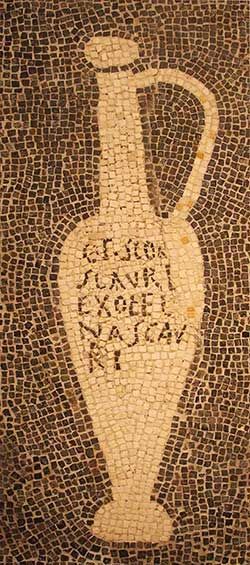When marketing is mentioned one thinks of 21st century tactics- exciting social media posts, tantalising content marketing, gripping email shots, paid ads and a cacophony of terminology like PPC and SEO. However Constandina Patsalou, AML Marketing Manager, discovers that outdoor advertising was particularly common in ancient civilizations.
Sellers in ancient Egypt, Greece, and Rome would paint their advertisements onto building sides, large rocks near popular roads and in town centres. Umbricius Scaurus, for example, was a manufacturer of fish sauce in Pompeii, circa 35 B.C. In his villa images of an amphora with his personal brand were found, even listing the health benefits to his legendary fish sauce. Delicious!

Due to the linguistic diversity in harbour towns, vendors would create image-based signs that represented their goods. For example, the Rod of Asclepius was used for medicinal purposes and is still used today as a symbol for hospitals. Bakers in Herculaneum and throughout the Byzantine period were known to stamp their loaves with the producer’s name thus creating their very own brand identity and preventing baked loaf identity theft, like our beloved baked goods today.

Today we also use the power of PR and influencers, but these haven’t just emerged with the rise of social media. Roman gladiators and Greek Olympians were commissioned to endorse particular products such as oils, textiles and weapons. Ironically, a scene was cut from the 2000 Gladiator film which showed Maximus endorsing a brand of olive oil. Instead of social media influencers glamorously drinking the latest herbal tea or actors on TV endorsing the newest tech gadget, they had their very own stars in the arena with their own dedicated fans.
Sellers across the ancient world would of course also get customers attention through classic techniques such as shouting, playing the lute outside their store or placing sweet smelling ointments to lure a potential passer-by. Which isn’t a favourable technique anymore, as being stopped today by sellers showing you their petitions or flyers isn’t the most preferable option – you won’t be seeing me on a curb with a banner anytime soon. Yet with the internet revolution we’ve seen these physical leaflets and criers transfigure into spam mail and pop ups.
The reality is marketing has existed for centuries. Although the development of digital marketing has been a leap of progression to reach the masses – the premise remains the same; to approach and educate your wider audience thus creating a loyal customer. Next time you spot an AML poster or watch an advert online you’ll see not all that much has changed.


